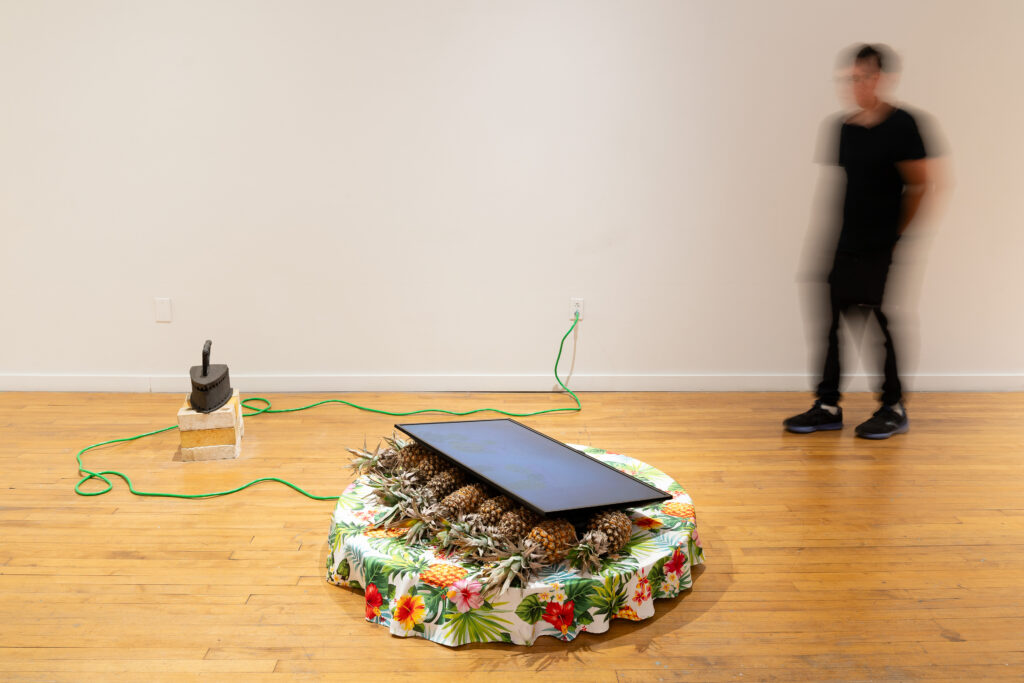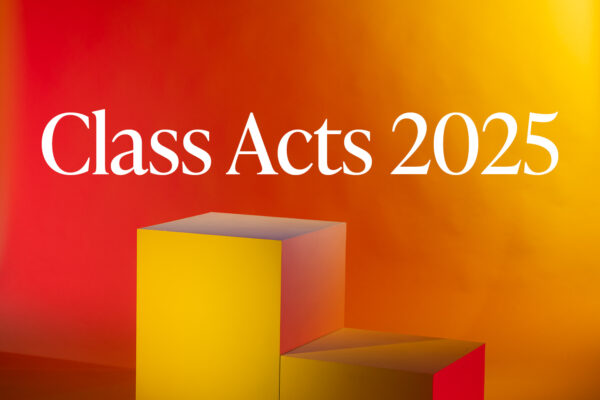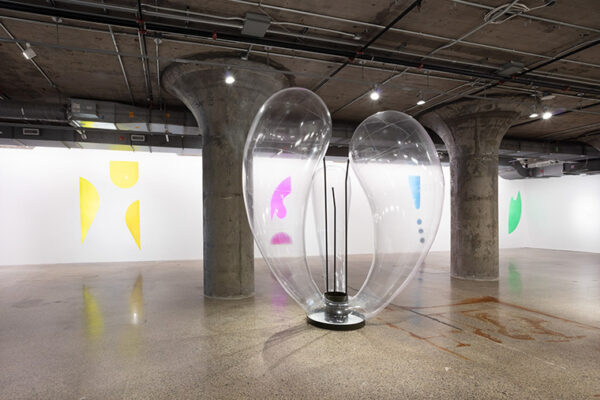As an undergraduate at the Universidad Nacional Experimental de las Artes in Venezuela, Eva Agüero trained as a painter. Her work was abstract and atmospheric. She made her own oils from pigment and binder.
Few of those paintings now survive. In 2021, just a day before Agüero boarded a flight for the United States, fire struck her parents’ home in Caracas. Books, photos and canvases were lost. Further constraining her studio practice, which had gradually shifted to sculpture, was the COVID-19 pandemic.
“I wanted to keep working, but my apartment was small,” Agüero recalled. She began going for long walks outside. She made short videos. Returning home, she’d experiment with editing software. “It was a creative outlet. I discovered a freedom in that digital space.”
In May, Agüero is set to earn a master of fine arts degree in visual art from the Sam Fox School of Design & Visual Arts at WashU. She also will present a new multimedia body of work at WashU’s Mildred Lane Kemper Art Museum, as part of “Slow Gardens,” the 2025 MFA thesis exhibition.
You grew up in an artistic family. How has that shaped your outlook?
My mom is an art teacher. She had a studio in the house — a lot of materials, a lot of art books. I’m the youngest of four and sometimes we’d go with her to class, or to museums or openings. We were close to art all the time.
Also, my great aunt — Reina Herrera, my grandfather’s sister — was a well-known ceramicist. She had a big ceramics studio and we’d often go visit. I loved hearing all her stories.
So yeah, I guess I always had an artistic view of the world. Becoming an artist felt like a career that was very much in sync with what I wanted to be as a child. I wanted to create. I wanted creativity to be part of my day-to-day life.

Your recent works grapple with a 19th-century etiquette manual by Venezuelan diplomat Manuel Antonio Carreño. What’s the significance of that book?
Carreño was from the dominant class. After Venezuelan independence, his intention was to perpetuate his privilege and power. And it worked. Etiquette, education, table manners, having a specific articulation or tone of voice — these things became status markers.
‘Manual de Urbanidad y Buenas Costumbres’ (1853) is still very present in people’s minds. I read it in elementary school. It’s associated with how one should aspire to be as a cultivated person, and many of its ideas relate to women and domesticity. Today we understand that women are not intrinsically attached to domestic labor, but there is still an unconscious association or bias.
I wanted to consider the possibility that such ideas are fictional creations. We’ve decided one way is correct — but why not another way? What does it mean to be educated? How do structures change? Why do we accept them, or not?
What does arts leadership look like for you?
For me, leadership in the arts is primarily about the inspiration and impact we can have on others, and how others inspire us.
My mom, my great aunt … Their examples made an impact on my life. But other figures did as well. I guess that’s the nature of inspiration. A lot of people who have inspired me aren’t aware of their impact. But that’s one of the hopes whenever you show your work. Maybe there’s another person questioning the same things that I’m questioning.
Many people have done or said things that kept me going. Many people have made me feel that I belong — that I have something to contribute.


